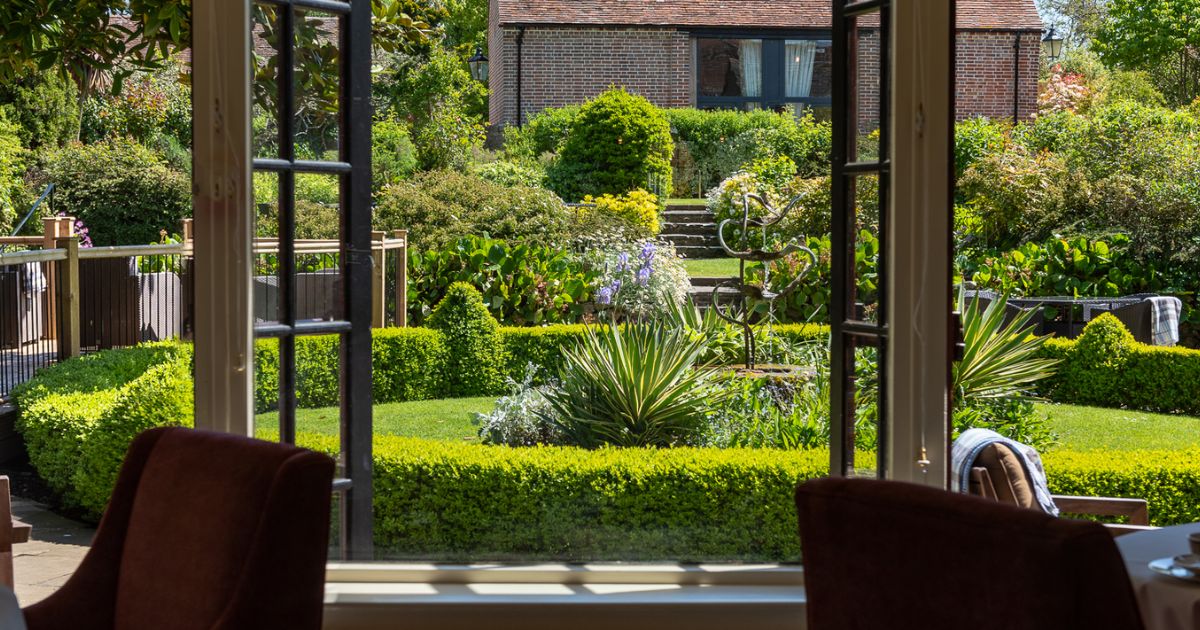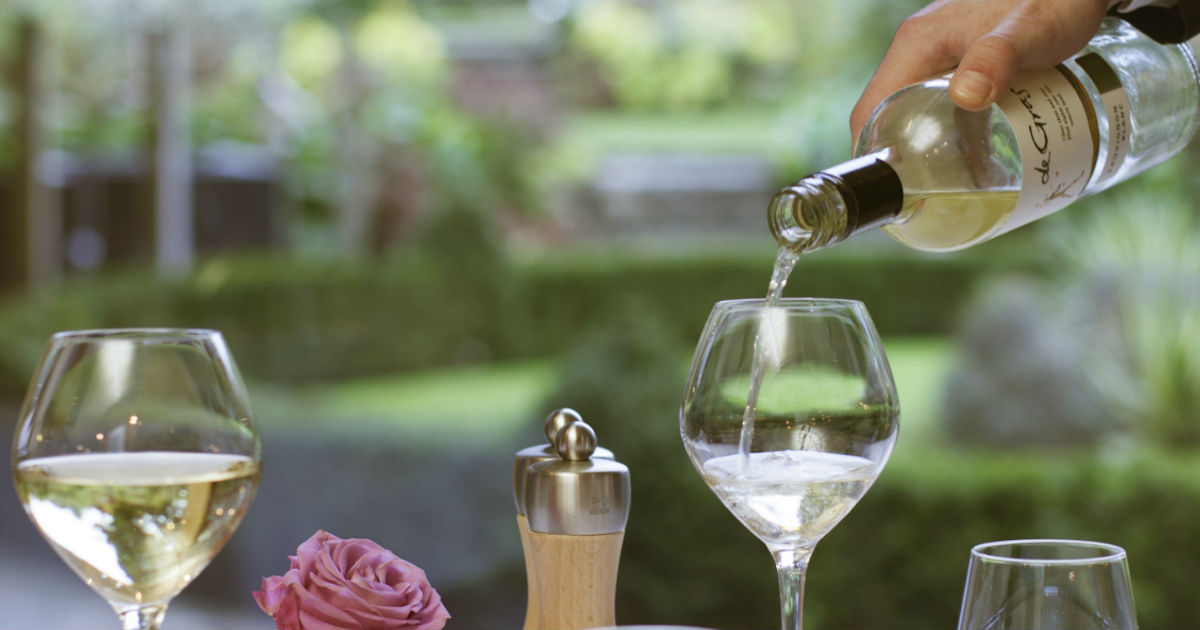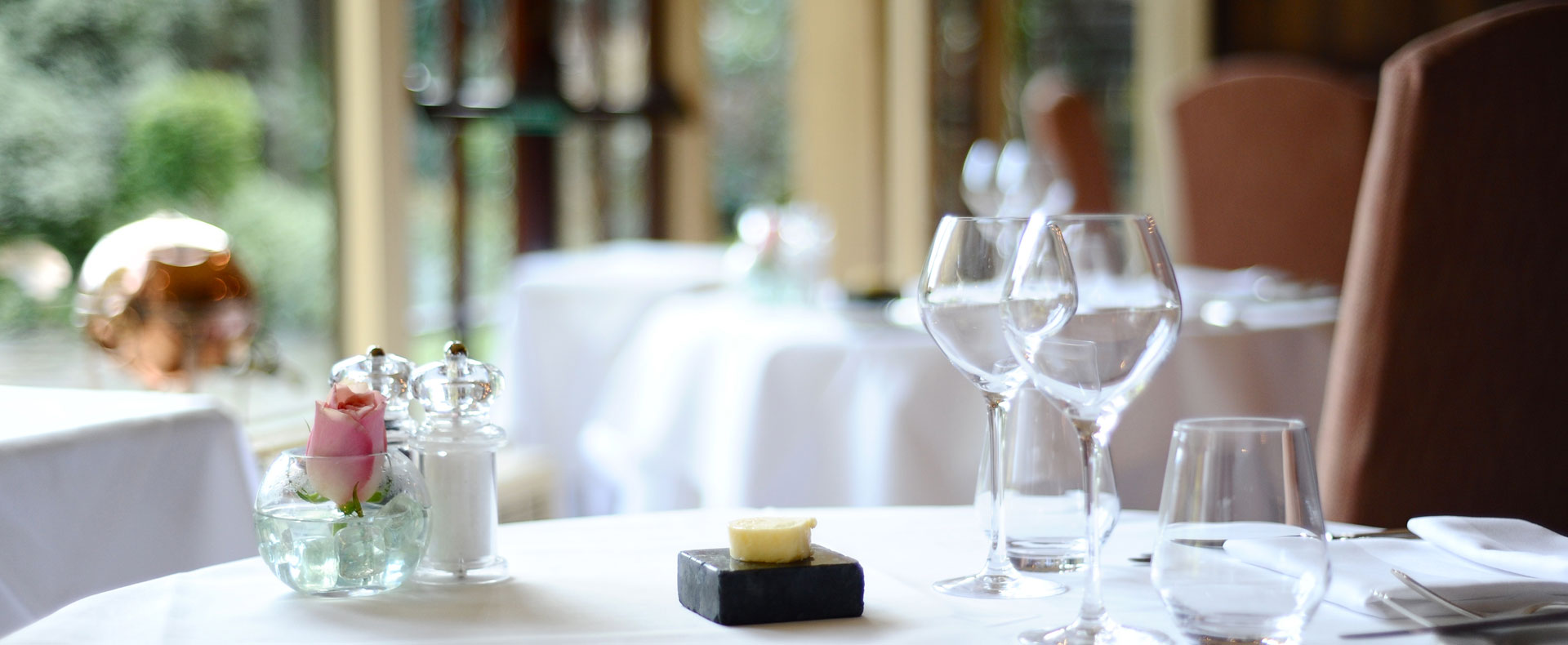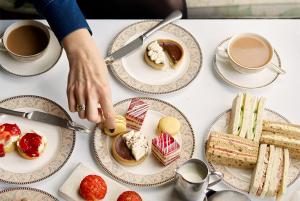Fine dining etiquette - what you need to know
19th Feb 2019
For some, fine dining conjures preconceptions that may be standing in their way of enjoying so many wonderful dining experiences. For one, fine dining is more than ‘tiny plates of food’, and two, there is the question that may be stopping you in your tracks, “is fine dining too posh for me?”
The philosophy behind fine dining is all about relishing every bite rather than eating beyond satiation, therefore there are usually multiple courses and yes, they will be smaller than your average Sunday Roast. But did you know that smaller portions are served intentionally in fine dining restaurants as the pleasure of eating is most intense within the first few bites? After which you are simply trying to remember that first wonderful taste. Therefore, the expectation is that you would much rather enjoy every bite as much as the last before moving on to another extraordinary course.
As for the second assumption, rather than posh and stuffy, look at fine dining as a unique type of theatre, where your table is an elegant stage inviting passion, flavour and experience to come together to create culinary magic, and it is a performance that we would like everyone to enjoy.

We look in admiration at the outstanding restaurant, Eleven Madison Park in New York, with their spectacular eight to ten course menu keeping taste buds entertained for all night or to the Sea Grill, in the heart of Brussels, where Chef Yves Mattagne takes a personalised experience seriously, offering multiple private dining rooms for a journey which ‘along the way takes different forms and colours, combining the influences of our eclectic and multicultural world.’
So, the question as to whether it is too posh for you? Absolutely not, it is simply different and sometimes truly unique, and like any different, or new experience, the more prepared you are, the more comfortable you will feel. So, when it comes to fine dining, the more you understand about fine dining etiquette, its philosophy on food and the traditions which uphold such a wonderful experience, the more you will enjoy your meal.
There is something truly special about visiting an award-winning fine dining restaurant, where there is still a traditional touch of elegance, where there is no smartphone in sight, where dress code is imperative, and refinement leads the way. For special occasions or spontaneous new experience collecting there can only be one answer, and that is fine dining.
Fine dining etiquette for an unforgettable experience
Dress Code
If in doubt, too formal is always better than too casual. When you book you can enquire about the dress code, that way you will not be worrying about what to wear and you can feel confident and look forward to your fine dining experience. (If there were an official fine dining etiquette guide, we are sure it would say that shirts are always tucked.)
Phone, wallet, keys
Phones, or technology of any kind, have no place at the dining table, this is not just part of fine dining etiquette but should simply be good manners for every dining table. Turn phones onto silent mode and keep them in a bag or pocket, or even better, leave them in the car. You do not want anything distracting you from your meal.
As for keys, wallets and other essentials, they only act as a distraction and you certainly will not need them at the table, so please leave them in your pockets or keep them in a handbag.
Punctuality is key
Fine dining restaurants require bookings as they are often extremely busy and have much to prepare in advance, so when you book a table it is only polite that you arrive with enough time to hang your coat, order a drink and be seated for your meal.
Remember your elbows
It may be an age-old saying but everyone needs a little reminder about keeping those elbows off the table now and then. Again, this is not just fine dining etiquette but simple good manners for everyday dining.
Cutlery
If you are not familiar with a choice of cutlery, not to worry, simply work from the outside when selecting your cutlery for each course. Traditionally the knife is usually held in the right hand and the fork in your left but today, if you are lefthanded it is generally accepted to make the swap.
When you are finished, place your cutlery together in the middle of your plate as a subtle signal you have finished eating.
Patience
It is only polite that you wait until everyone is served before you start eating.
Napkins
Firstly, never tuck your napkin into your shirt or blouse. Simply unfold, if the waiter or waitress have not already done so for you, and place across your knees. Remember too that your napkin is there to be used so when you do need it, just dab your mouth rather than wipe it.
If you need to excuse yourself from the table for any reason during your meal, simply leave your napkin on your chair and at the end of the meal or if you are in between courses, neatly place it on the table to the left-hand side of your plate.
That little plate
The plate on your left is for bread rolls. The fine dining etiquette for bread rolls is that you never use a knife to cut it but rather break it with your fingers, use the butter knife to apply butter, keeping it on the plate and never holding it in mid-air, then eat small pieces at a time.
Soup to start?
Scoop the soup and drink from the edge of the spoon (without slurping) rather than putting the spoon into your mouth. And remember, never lift the bowl up from the table.
Use your fork as a fork
Do use your fork as a fork rather than scooping up the food like a spoon.
Take your time
Remember to slow down and enjoy every bite, fine dining is an experience to be relished, so it is polite to cut up one piece of meat or fish at a time and eat it before cutting up the next. There should be no rush to finish this delightful experience.
Drink moderately
Fine dining is beautifully balanced with a fine wine or wine pairing recommended by the Sommelier rather than spirits or soft drinks. Remember to pace yourself, there is no race to finish and you do not have to drink every drop.
Hold glasses from the top of the stem not the bowl and when drinking it is polite to keep your eyes on the glass rather than anyone at your table. When clinking glasses for a toast it is always polite to make eye contact with your companion(s).

Attracting your waiter or waitress
Your waiter or waitress will be highly attentive throughout the experience and should not require any cues, however if you do need to attract their attention, the politest way is to make eye contact with the them. Do not wave or flail your arms in their direction, and certainly do not call for them across the room.
Unsure of something on the menu?
If there is anything you are unsure of or if you have any questions regarding the menu or your dining experience your waiter or waitress will be able to assist you. Do not hesitate to ask them to explain anything or to find anything out for you. They are there to help make your experience unforgettable.
Knowing and understanding a bit about fine dining etiquette only makes for a smoother, more polished and impressive experience. It is all about your enjoyment of the fine cuisine that has been thoughtfully prepared and combined for the most memorable flavour experience.
For your next special occasion or when you feel like trying something new do not let presumptions stop you but rather come and experience the magic for yourself. Book a table at The Terrace Restaurant at our country house hotel, The Montagu Arms and let us show you what real fine dining is all about.







